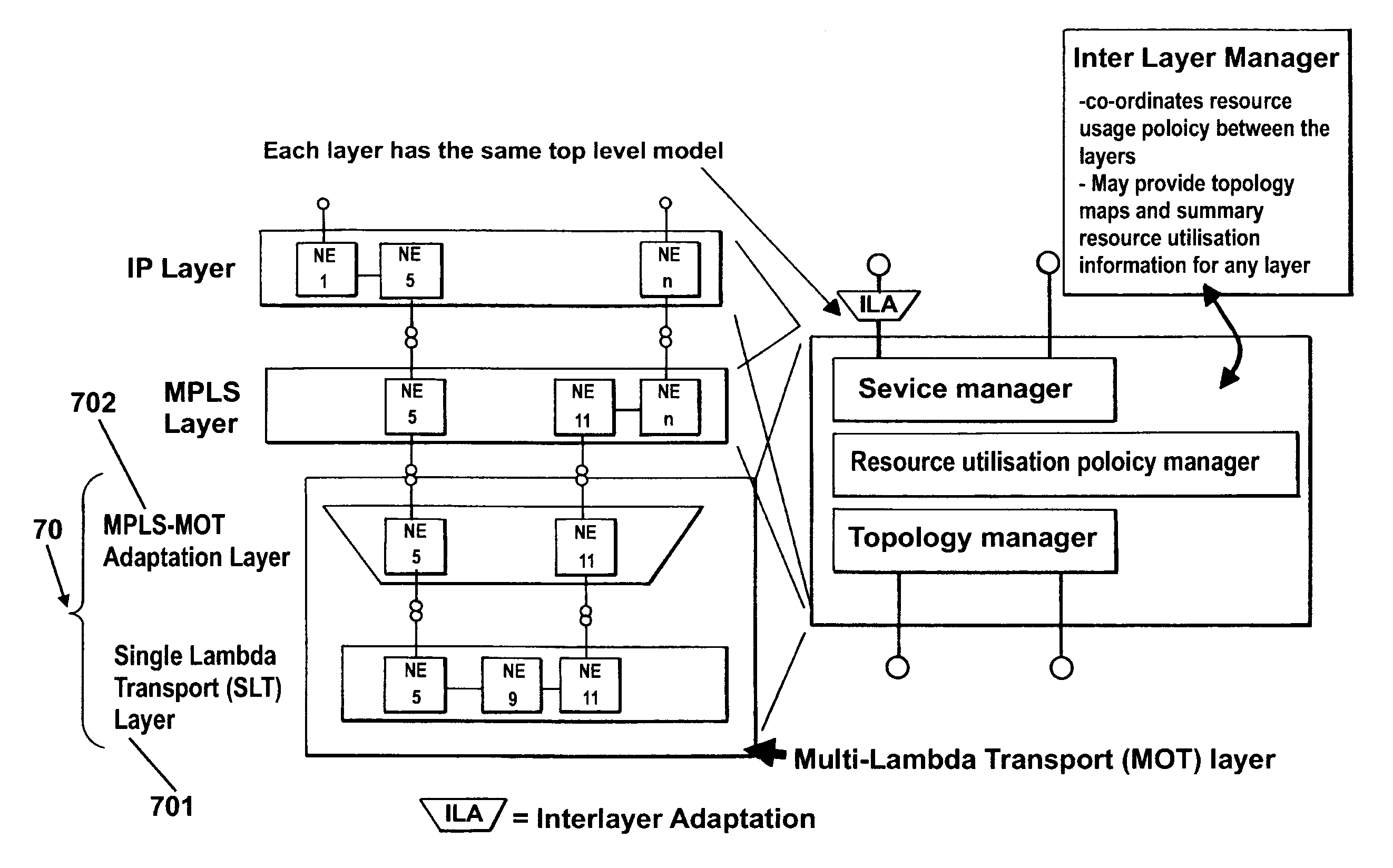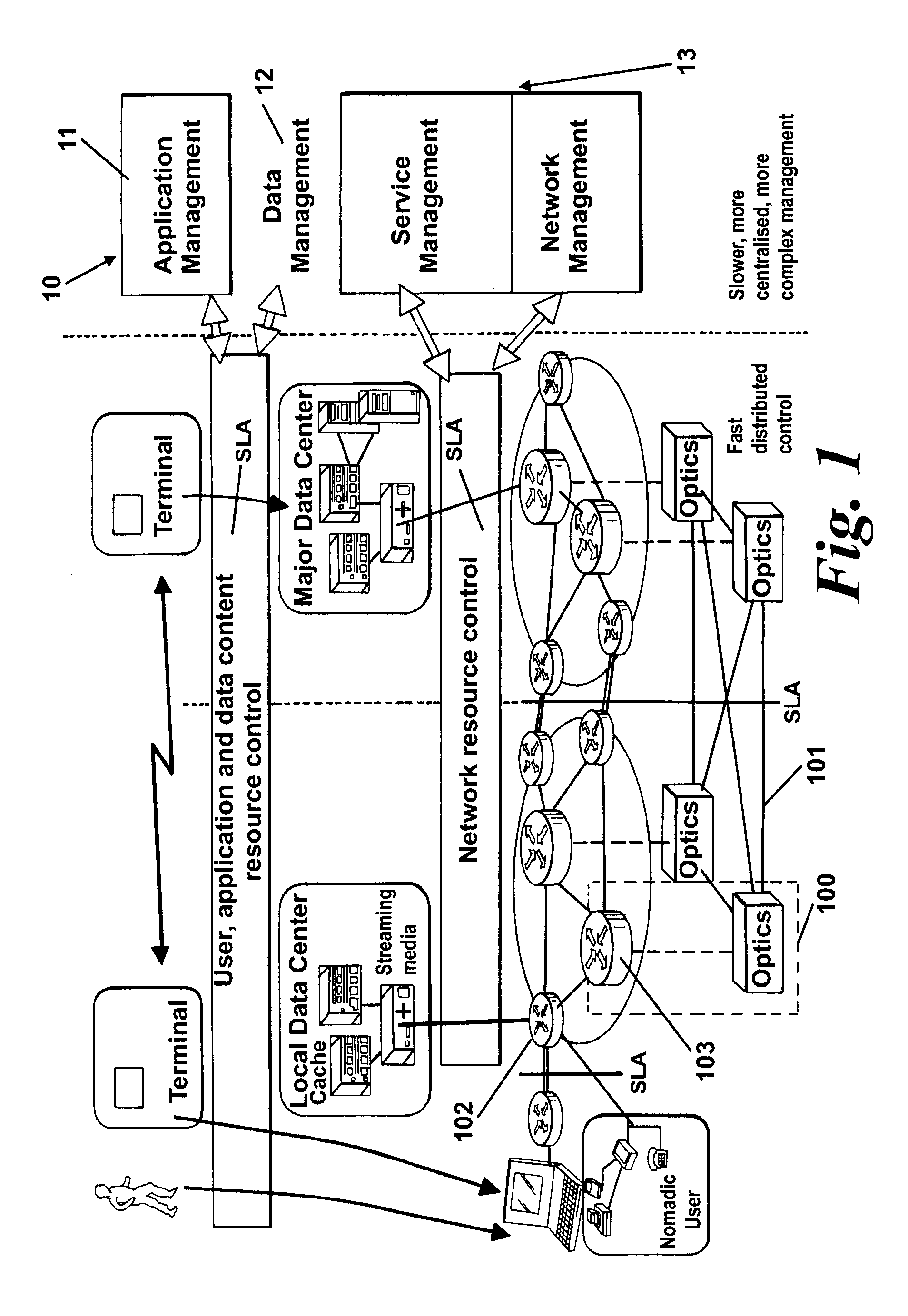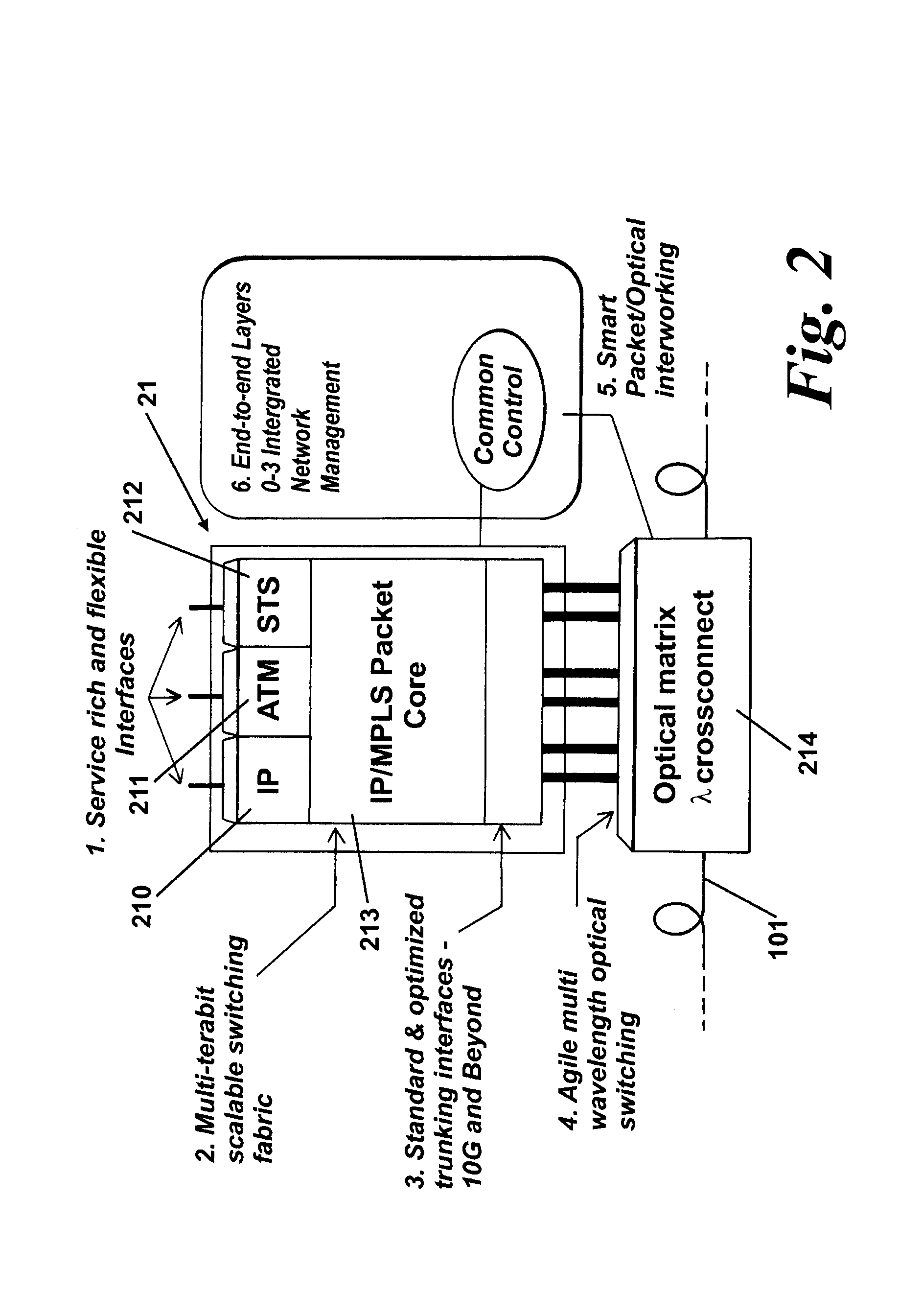Management and control of multi-layer networks
a multi-layer network and network management technology, applied in the field of management and controlling a communications network, can solve the problems of limiting the potential revenue return of the network operator, the difficulty of human intervention in providing the network management function, etc., to achieve efficient resource utilization, minimise the number of refusals for admission, and maximise the revenue return of the operator
- Summary
- Abstract
- Description
- Claims
- Application Information
AI Technical Summary
Benefits of technology
Problems solved by technology
Method used
Image
Examples
Embodiment Construction
[0049]Referring first to FIG. 1, this shows in schematic form a high level view of the architecture of the network management and control systems. The management system 10 depicted in FIG. 1 is hierarchical with high level application (11) and data (12) management services built upon lower level transport services (13) which in turn are provided by network and link level transmission services. For scalability and response speed it is desirable that the high speed control aspects are physically distributed across the network, whilst more longer term management aspects can be more centrally monitored and managed. User access is provided via terminals 15.
[0050]The network of FIG. 1 incorporates an underlying optical transport or lambda switched layer 101 supporting a network of nodes 102 and core nodes 103. It will be understood that the optical transport layer may carry traffic on a plurality of optical wavelengths in a wavelength division multiplex (WDM) arrangement. The structure of...
PUM
 Login to View More
Login to View More Abstract
Description
Claims
Application Information
 Login to View More
Login to View More - R&D
- Intellectual Property
- Life Sciences
- Materials
- Tech Scout
- Unparalleled Data Quality
- Higher Quality Content
- 60% Fewer Hallucinations
Browse by: Latest US Patents, China's latest patents, Technical Efficacy Thesaurus, Application Domain, Technology Topic, Popular Technical Reports.
© 2025 PatSnap. All rights reserved.Legal|Privacy policy|Modern Slavery Act Transparency Statement|Sitemap|About US| Contact US: help@patsnap.com



